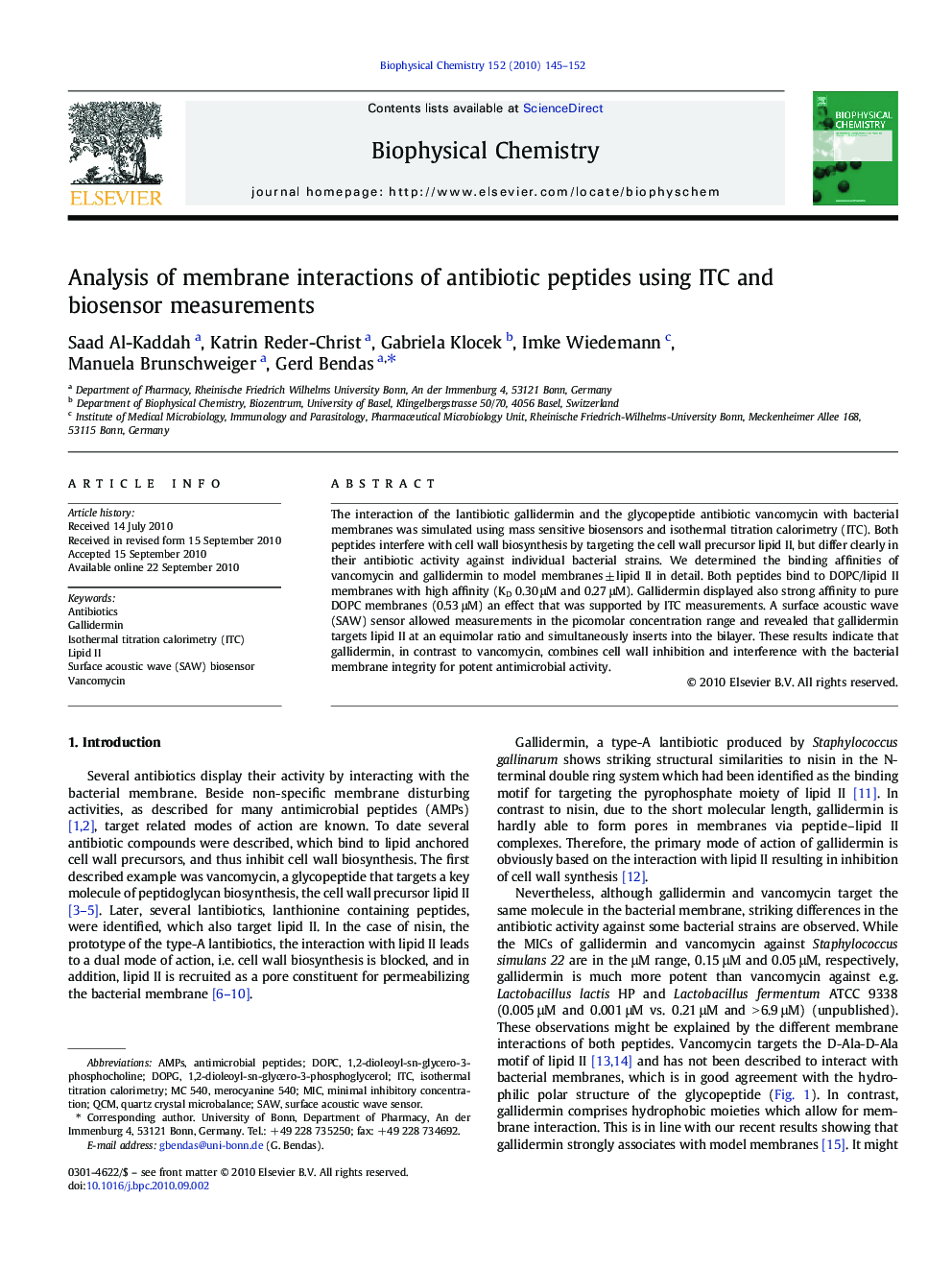| Article ID | Journal | Published Year | Pages | File Type |
|---|---|---|---|---|
| 5371485 | Biophysical Chemistry | 2010 | 8 Pages |
The interaction of the lantibiotic gallidermin and the glycopeptide antibiotic vancomycin with bacterial membranes was simulated using mass sensitive biosensors and isothermal titration calorimetry (ITC). Both peptides interfere with cell wall biosynthesis by targeting the cell wall precursor lipid II, but differ clearly in their antibiotic activity against individual bacterial strains. We determined the binding affinities of vancomycin and gallidermin to model membranes ± lipid II in detail. Both peptides bind to DOPC/lipid II membranes with high affinity (KD 0.30 μM and 0.27 μM). Gallidermin displayed also strong affinity to pure DOPC membranes (0.53 μM) an effect that was supported by ITC measurements. A surface acoustic wave (SAW) sensor allowed measurements in the picomolar concentration range and revealed that gallidermin targets lipid II at an equimolar ratio and simultaneously inserts into the bilayer. These results indicate that gallidermin, in contrast to vancomycin, combines cell wall inhibition and interference with the bacterial membrane integrity for potent antimicrobial activity.
Graphical AbstractDownload full-size imageResearch HighlightsâºAnalysis of membrane interactions of antibiotic peptides using ITC and biosensor measurements âºantibiotic activities of gallidermin (Gal) and vancomycin (Van) were simulated âºmodel membrane approaches are powerful tools to elucidate their mode of action âºGal and Van have an identical affinity to lipid II, but differ in membrane interaction âºGal targets lipid II in a 1:1 ratio, in synergy inserts and rigidifies the membrane âºSAW technology is excellent to follow peptide membrane interaction in pM range
